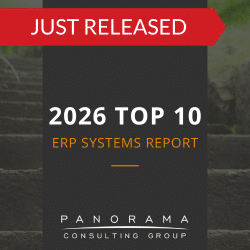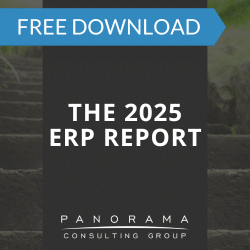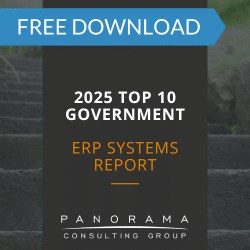- Many ERP failures are caused by poor implementation planning—not the wrong system.
- Missteps like weak change leadership, bad data, and unclear business goals derail projects.
- In some cases, software misalignment—like missing core capabilities—means a wrong ERP fit.
- Executives can course-correct by diagnosing root causes, stress-testing the system, and reassessing vendor fit.
The technology decision process usually involves demos, stakeholder interviews, ROI modeling, and countless hours of internal deliberation. Yet, despite all this rigor, some ERP projects unravel. Leaders start asking: Did we choose the wrong ERP? Or did we just implement it poorly?
Today, we’ll unpack that question from a grounded, executive perspective. We’re not here to endorse software vendors or point fingers at implementers. Our goal is to help you evaluate whether the cracks in your ERP project stem from flawed software selection or from a lack of implementation readiness.
Contemplating litigation?
We have multiple software expert witnesses available for provision of reports, depositions, and testimonies.
When the Software Isn’t the Problem: Signs of Poor Implementation Planning
Many ERP problems arise from gaps between strategy and execution.
Here are four signs your ERP implementation was poorly planned, even if the software was a good fit:
1. There Was No Clear Business Case
Many ERP projects focus only on replacing systems without understanding value drivers, such as faster close cycles, better supply chain visibility, and stronger margin control.
Without that north star, the implementation becomes a tech project instead of a business transformation. This disconnect invites rework and change fatigue.
2. Process Design Happened in a Vacuum
Best practices in business process management consulting emphasize understanding your current state sufficiently so you can design processes that align with ERP preconfigurations. But in rushed projects, client teams often jump into configuration without mapping how processes function across departments.
The issue isn’t the software. It’s that no one slowed down to verify whether the preconfigured workflows matched real-world operations.
3. Data Quality Was an Afterthought
Bad data leads to ERP failures faster than most executives realize. If your implementation didn’t involve robust data management, you may be introducing chaos into every module.
We’ve seen clients pause entire ERP projects just to clean and restructure master data across locations.
4. There Was No Change Leadership
An ERP rollout without visible executive sponsorship quickly loses credibility. This is often the first symptom of a struggling ERP initiative.
Sustainable change happens when leaders demonstrate the system’s value and remove barriers to adoption.
When the Problem Might Be the Wrong ERP
There are times when poor outcomes do point to a fundamental software mismatch. No amount of process design or change management can make the wrong platform the right fit.
Here are five indicators that you may have selected the wrong ERP system:
1. The ERP Lacks Advanced Operational Capabilities
The best ERP for manufacturing, for example, must support agility, precision, and traceability at scale. While it might manage finance and HR well, it may be weak in core operations.
When you have the wrong ERP,it may be “working,” but it’s not transforming your organization.
2. The Software Forces Constant Workarounds
Teams sometimes create manual processes outside the system. For example, they might use spreadsheets for inventory or other tools for scheduling. This usually happens because the software cannot handle the complexity of the business.
This is especially common when generic ERP systems are used in industries that demand specialized capabilities, such as those found in dedicated supply chain software.
3. You Selected a Platform Based on Consensus, Not Fit
ERP selection is often political, but when the final decision is the result of compromise rather than strategic alignment, the result may be a lowest-common-denominator choice that doesn’t serve any group well.
If no team feels “seen” by the software, you likely landed on the wrong ERP.
4. The Software’s Roadmap Doesn’t Align With Your Future
AI in ERP is evolving quickly. If your platform isn’t investing in automation, analytics, or usability improvements that matter to your growth strategy, it’s going to fall behind.
Executives should ask: Will this vendor still be a strategic partner five years from now?
5. The Selection Process Wasn’t Independent
Many ERP failures trace back to biased procurement. If your ERP system consultant was financially aligned with vendors, or if your shortlist was constrained to existing IT relationships, you may have chosen a system that served others’ incentives, not your business needs.
A true independent ERP selection process avoids this trap.
Learn More About ERP Implementation Planning
The list of ERP systems on most CIO’s desks today is longer than ever, with platforms for every industry, size, and deployment preference. But selecting the best ERP system won’t guarantee success without robust planning—and vice versa
Executives must learn to distinguish between wrong ERP decisions and poor ERP project planning mistakes. While the symptoms look similar (delays, user frustration, limited adoption), the remedies are different.
When in doubt, step back and clarify:
- Does the system align with how we create value?
- Do our processes reflect the reality of operations?
- Have we empowered our people to change?
If you did pick the wrong ERP, our independent ERP selection consultants can help you make a clean break. Contact us to learn more.















